Species
{{start}}
{{end}}
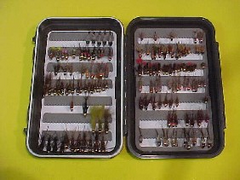
{{+1}}Trout fly tying kit – trout{{-1}}
{{start}}
This post lists all the materials you will need to tie all the flies in the course "abc of fly tying for trout" plus heaps of other flies.{{end}}
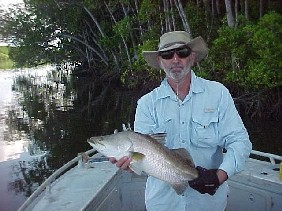
{{+1}}CV – Stephen Peter Chatterton{{-1}}
{{start}}
He has been involved with fishing ever since and fished extensively with lures before being introduced to fly fishing in 1993. With a background in commercial management in a number of large profitable private companies followed by eleven very successful vintages in his own winery which was in the top 10% by size in the Australian wine industry Stephen took a step backward from the daily grind and started his own boat charter and guiding services initially guiding on and around Lake Illawarra. In 2001 he moved to a rural village on the shore of Lake Jindabyne in the Snowy Mountains of New South Wales, so that he could focus more on his passion of fly fishing for trout, and transferred his boat charter and guiding business there.{{end}}
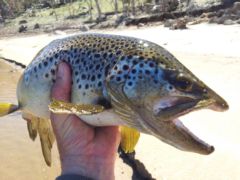
{{+1}}Lakes – polaroiding tips{{-1}}
{{start}}
For me polaroiding is one of the most rewarding forms of fly fishing. It involves the process of sighting fish with the aid of polaroid sunglasses and then working out and executing a when, where, what and how equation with the aim of enticing the sighted fish to take the fly. I like it because it puts me in environments that I enjoy and it's a real challenge of my stealth and cunning. I guess to the uninitiated this all sounds pretty corny, well perhaps it is, but don't knock it until you have tried it and had some success with it.{{end}}
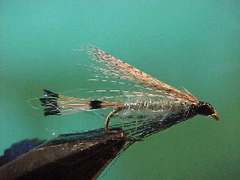
{{+1}}Blue & teal variant{{-1}}
{{start}}
A variant of a old English wet fly this variant is in the same class as an Alexandra this fly as an attractor fly particularly when rainbows are the target. It is different to the original in that the dyed blue hackle has been replaced by blue barbells from the chest feathers of a male peacock and the body is "Glamor" thread fuzzeled with silver UV dubbing.{{end}}
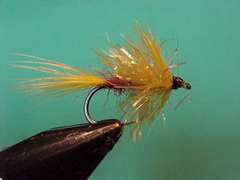
{{+1}}Fat boy – Chatto’s original{{-1}}
{{start}}
This is a "Blob with attitude" and because it actually looks like a fly I find it a a little easier to tie on than its very basic second cousins. It has a place in my fly box because from time to time, and particularly in competition fly fishing, you find yourself fishing in the most unpleasant conditions. In situations like that a blob with attitude may save the day.{{end}}
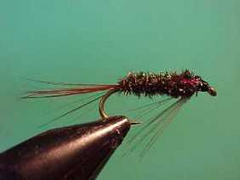
{{+1}}Diawl bach{{-1}}
{{start}}
I normally fish smaller sizes as a midge pupa and from time to time use larger sizes as a point fly in a team of wet flies on a floating or intermediate line. I tie it both with and without weight and find the addition of a small black tungsten bead makes it a handy anchor fly or a good prospecting fly in running water.{{end}}
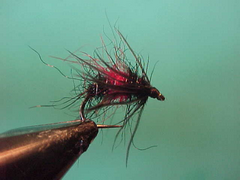
{{+1}}Bibio variant{{-1}}
{{start}}
Whilst the Bibio fly may have been originally designed as a blow fly representation it has found its place as a great top dropper fly in lakes where fish are midge feeders. That of course begs the question do fish take them as midges, or do they take them as some other insect more like a fly, but which spends part of its life cycle in the water, that just happens to hatch as the same time as a midge?{{end}}
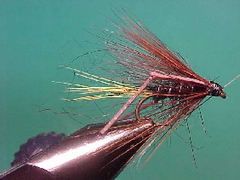
{{+1}}Leggy wake flies – Chatto’s variant{{-1}}
{{start}}
The beauty of this fly is that once tied with legs if on the day if you decide you want a fly without kegs its easy to snip the legs off. It's also versatile enough, witha little dry fly dressing, to be dry fly. My favourite dressings are blae and black, mallard and claret, green peter and Kate McLaren.{{end}}

{{+1}}Kalkite special{{-1}}
{{start}}
This fly has stood the test of time and has been on this web site since 2005. Over the last 10 or so years it has been my 'go to' fly when fishing to sighted fish or prospecting the shores of Lake Jindabyne particularly around our home village of Kalkite.{{end}}

{{+1}}Floating yabby / crayfish{{-1}}
{{start}}
A floating yabby is a bit of an oxymoron but it does work. Fish it on a fast sink line and let the line sink to the required depth. When you pull the line the floating yabby will be pulled down. When you pause the yabby will rise. Bass love it.{{end}}













